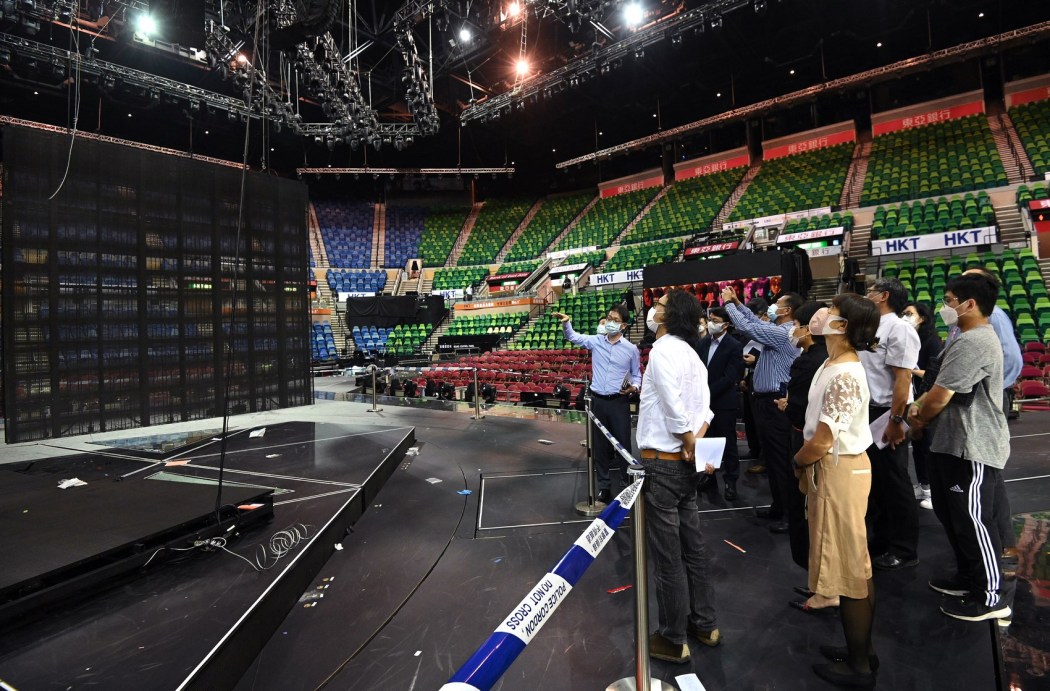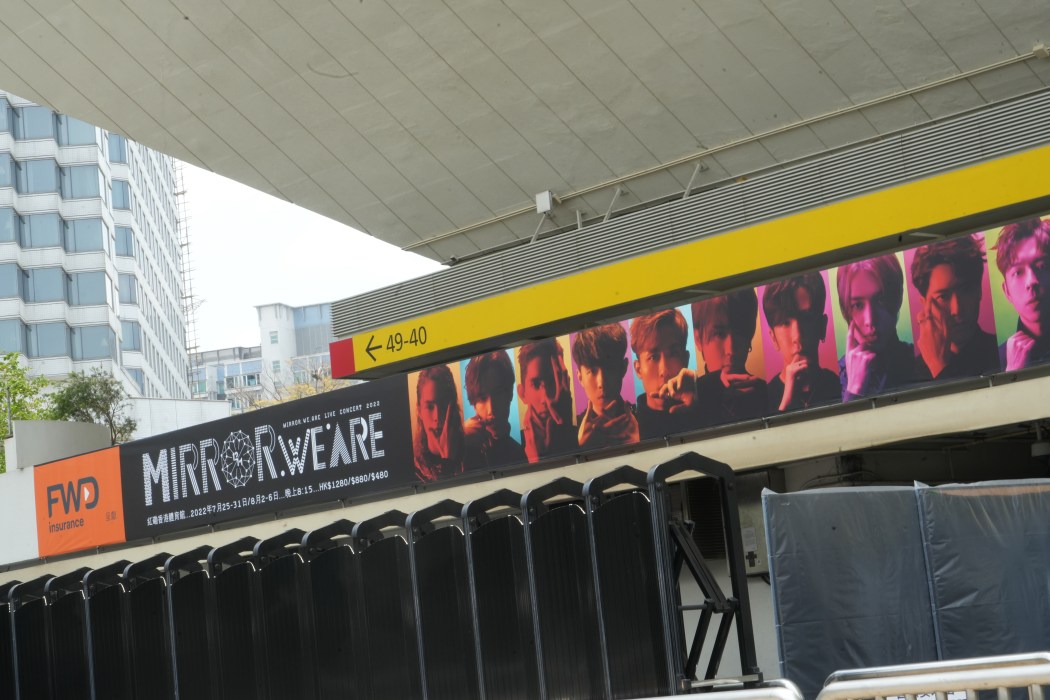The wire that snapped during a concert by Hong Kong boy band Mirror last month – sending a giant screen suspended by it plummeting onto the stage below – showed signs of “fatigue”, had been improperly installed, and its load was understated, a government investigation into the incident has found.

The falling screen hit and injured two dancers. One remains in a critical condition under intensive care at the Queen Elizabeth Hospital.
Why did the screen fall?
The screen in question was suspended by two steel wire ropes, which were connected to it by two separate eye bolts.

During the incident, one of the wires snapped first, causing one side of the panel to plunge downwards. While the other wire remained intact, the eye bolt connecting it to the screen broke, and the entire screen fell onto the stage, Lee Tsz-chun, the chairperson of the task force, told the press on Wednesday.
Why did the first wire snap?
After examining the wire with an electron microscope, investigators found evidence of metal fatigue – “fatigue striations” – where the first wire broke, Eric Lim, an expert advisor of the task force, said. According to Lim, it would typically take tens of thousands or even millions of uses for a steel wire rope to demonstrate metal fatigue.
Lim said there were three factors that would cause fatigue to occur in such a short period of time on the wire concerned – its condition, its installation and its load.
Initial tests showed that the maximum load that the wire in question could bear was 20 per cent less than other wires with similar specifications on the market.

Damage was also discovered on unused sections of the wire. Lim said this suggested that the wire was damaged before installation, although the task force had not discovered why.
Both the reduced capacity of the wire and its damage had made metal fatigue more likely, Lim said.
Additionally, the wire underwent extra wear because of the winch system used.
A rotating rope guard is typically installed on a winch to make sure a wire stays on its thread. However, Lim said the winch system in question had a fixed rope guard, which would squeeze a wire and cause wear to its surface.
Lim also said that the first wire had to go through an extra set of pulleys to reach the winch than the second one, placing more pressure on the already worn wire.
As for the load, Lim said there was “a large percentage difference” between the actual weight of the screens the task force measured and the figure provided by the event organisers.

“The choice of wire is based on how heavy the object to hang is,” Lim said, but it turned out the load was “much bigger than expected.”
Speaking to Commercial Radio on Thursday morning, another member of the task force, Louis Szeto, revealed that the screens in question weighed around 500 kilograms. Documents submitted to the Leisure and Cultural Services Department by the live show’s organisers said it only weighed at 500 pounds, or almost 227 kilograms.
However, Szeto said the two wires should have been able to bear a 500 kilogram load as they could each take 1,100 kilograms before breaking.
“The reasons [behind the incident] were those external factors that accelerated the wire’s fatigue,” he said.
What happened to the second wire?
Although the first wire broke off, Szeto said the load capacity of the second one alone should have stopped the screen from falling.
However, the eye bolt connecting the second wire to the screen snapped as the screen was plunging.

Szeto said most of the threads on the bolt had remained intact, but there was an incision where it snapped.
The engineer said the task force would need to conduct further experiments on the bolt to determine why it had broken.
Who is responsible?
When asked who should bear the responsibility for the incident on Wednesday, Lee said he did not want to “say too much” as other government departments were also investigating the matter.
“At this stage, it was not very fair to say someone is responsible shortly after seeing [the progression of] the issue,” he added.
The chair of the task force said their probe was expected to wrap in the next month.
When faced with a similar question on RTHK on Thursday, Szeto said it was difficult to tell which company was most at blame as the different parts of the project were completed by an array of contractors and subcontractors.
But he said the lack of communication among these parties was what had caused the accident.
Support HKFP | Policies & Ethics | Error/typo? | Contact Us | Newsletter | Transparency & Annual Report | Apps
Help safeguard press freedom & keep HKFP free for all readers by supporting our team

HKFP has an impartial stance, transparent funding, and balanced coverage guided by an Ethics Code and Corrections Policy.
Support press freedom & help us surpass 1,000 monthly Patrons: 100% independent, governed by an ethics code & not-for-profit.










